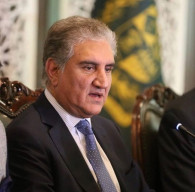
In the late 1800’s, the United States, after having emerged from a nation-rending civil war, was looking to the West beyond the Mississippi River to settle an increasingly unruly population. The only problem was that there were a fair amount of Native Americans in that region who were, for obvious reasons, opposed to such settlements. The Native Americans were eventually conquered and deposited on to reservations from where they could not leave or make any trouble. But they did make trouble. They riled against this forced displacement and against the limitations placed on their ability to re-locate if they saw fit to do so. Is this starting to sound familiar?
Eventually the Native Americans began to create support structures within the reservations based on their longstanding tribal affiliations to use the homogeneous nature of such structures to fight back against the US government. This provoked a piece of legislation which was called the Dawes Act.
The United States Dawes Act of 1887 was meant to address the “Indian Problem” by essentially stripping the Native Americans of their identity. This was accomplished by allowing White settlers to settle on reservation land provided that each head of a Native American household was given a certain amount of land as compensation. While this seems fair enough on its surface, the intent was to rip the fabric of Native American society — the tribe — apart. Tribes shared land and always had done so. By separating tribal ownership and making the ownership personal, while allowing Whites to occupy the residual spaces, the US government very effectively ended any cohesive tribal identity that Native Americans had left.
Does this sound familiar? What is Modi trying to do right now? One of the few backstops that Kashmiris had was that so long as they had a modicum of self-governance they could prevent outsiders from buying up their land thereby displacing them and diluting their cohesion. That backstop is now gone, just as the Native American’s ability to stop the identical practice on their reservations was terminated by the Dawes Act. Modi’s goal is to eradicate Kashmiri culture exactly as the US intended to do with the Native Americans. He is attempting to achieve this goal in substantially the same manner by which the US achieved its goal 150 years ago — cleave the community and dilute it as much as possible so that it is no longer an identifiable community.
Make no mistake about it. While this is not on the level of a Nazi-Jewish genocide, this is ethnic cleansing without, so far, the outright killing. In order to resist unwanted malicious outside influence, one needs a cohesive community united in such resistance. The Dawes Act stole that cohesiveness from the Native Americans and that is what is being attempted in Kashmir. The Americans did it 150 years ago through legislation. Why not Modi?
Published in The Express Tribune, August 18th, 2019.
Like Opinion & Editorial on Facebook, follow @ETOpEd on Twitter to receive all updates on all our daily pieces.






































COMMENTS
Comments are moderated and generally will be posted if they are on-topic and not abusive.
For more information, please see our Comments FAQ